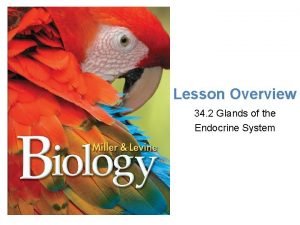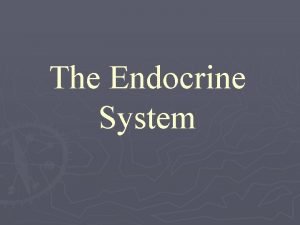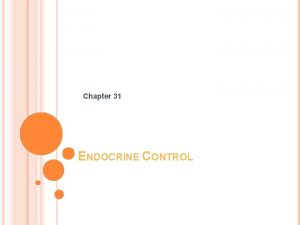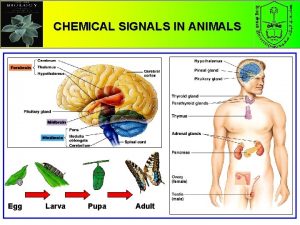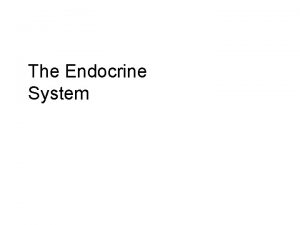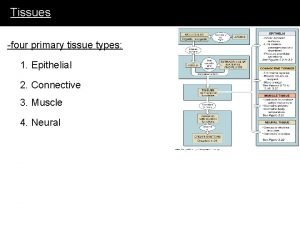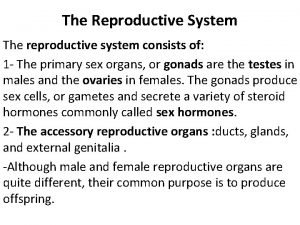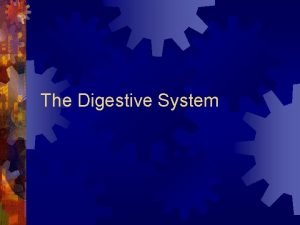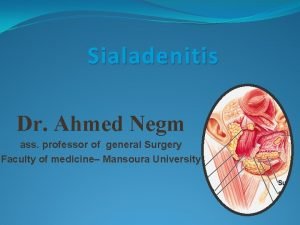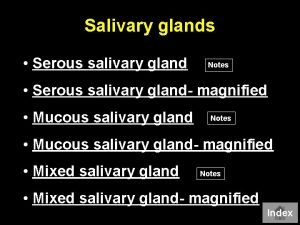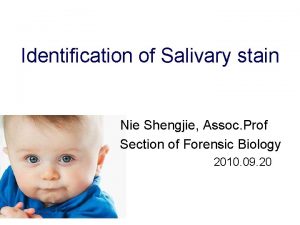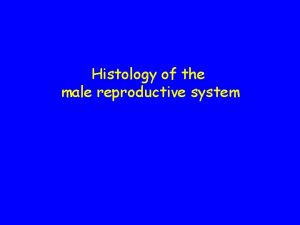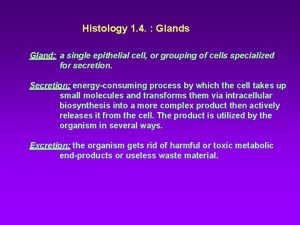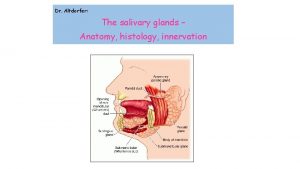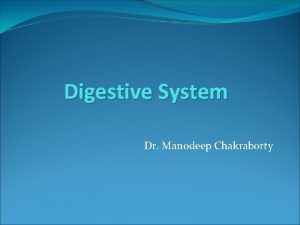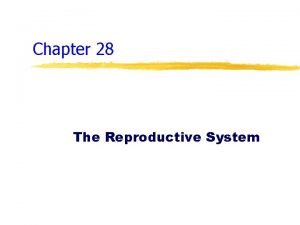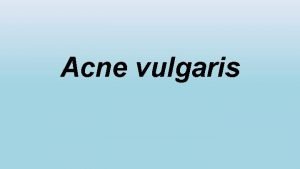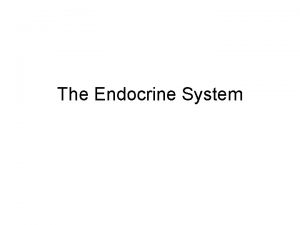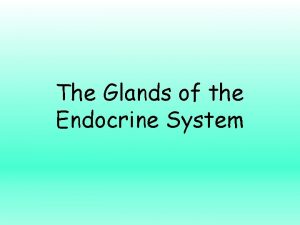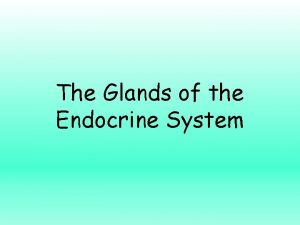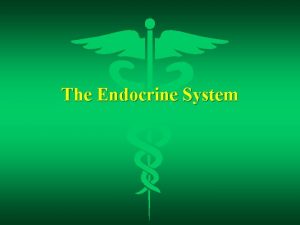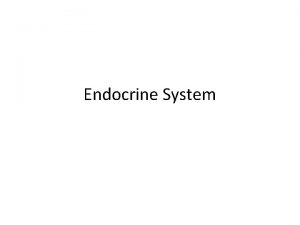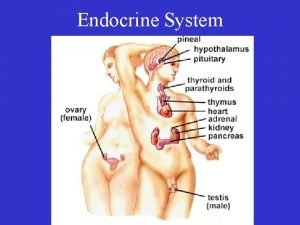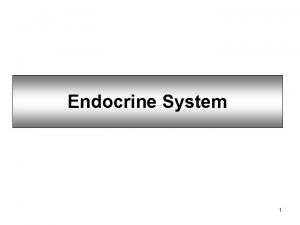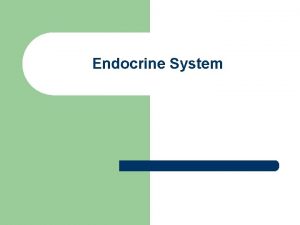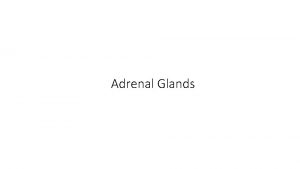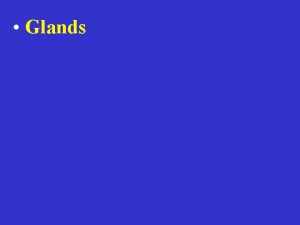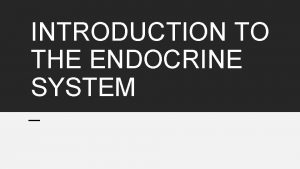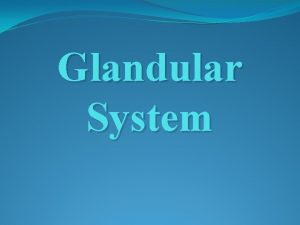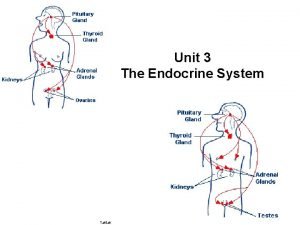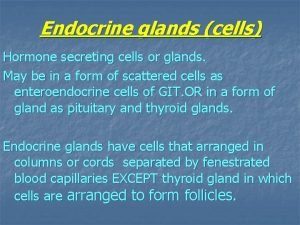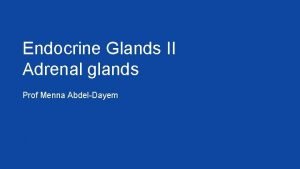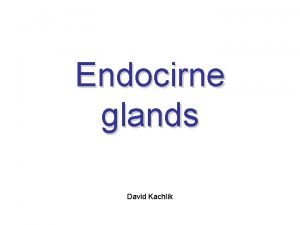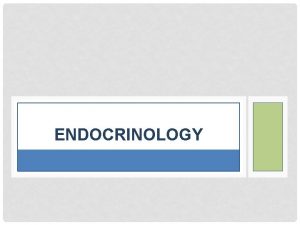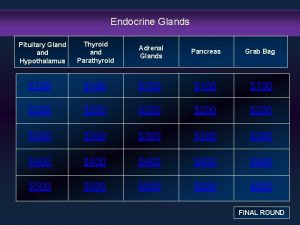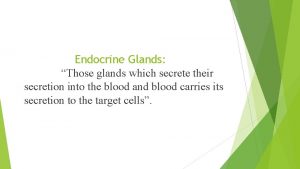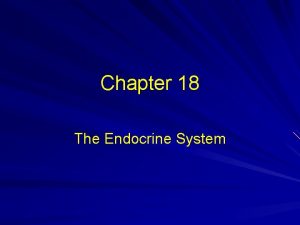Endocrine System UNIT 7 Endocrine System Endocrine glands








![GH Secretion § OVERSECRETION during childhood [before puberty] Leads to Gigantism § OVERSECRETION after GH Secretion § OVERSECRETION during childhood [before puberty] Leads to Gigantism § OVERSECRETION after](https://slidetodoc.com/presentation_image_h2/93f961028cf2da7f925959e18bd21e5e/image-9.jpg)

























![Parathyroid §Parathyroid Hormone (Parathormone) §– opposite effect as calcitonin [antag] § – increases blood Parathyroid §Parathyroid Hormone (Parathormone) §– opposite effect as calcitonin [antag] § – increases blood](https://slidetodoc.com/presentation_image_h2/93f961028cf2da7f925959e18bd21e5e/image-35.jpg)
- Slides: 35

Endocrine System UNIT 7


Endocrine System Endocrine glands – secrete hormones into nearby tissues, diffuse into bloodstream (Ex. thyroid, pituitary, adrenal, etc. ) Exocrine glands – secrete into tiny tubes or ducts (sweat, salivary, etc. ) Some organs (pancreas) are both endocrine and exocrine

Exocrine Gland - ducts

Hormones §Chemical secreted by a cell that has an effect on the functions of another cell §Very specific – affect only their target cell §Increase # of receptors – increase response §Effect can be brief or long-lasting §Antagonists – hormones that work against each other §Synergists – hormones that work together

Pituitary Gland (AKA Hypophysis)

Pituitary Gland §Also known as Hypophysis §Size of a pea §Attached to the brain by a stalk (infundibulum) §Rests in a bony depression of the sphenoid bone (sella turcica) § 2 lobes §anterior lobe – 7 hormones §posterior lobe – 2 hormones

Anterior Lobe (adenohypophysis) §Prolactin (PRL) – inc. milk production and sustains it after birth §Adrenocorticotropic Hormone (ACTH) Regulates hormone release from adrenal cortex (stress hormones) §Growth Hormone (GH) – stimulates body cells to grow and divide; inc. body’s ability to use fats and carbs for energy
![GH Secretion OVERSECRETION during childhood before puberty Leads to Gigantism OVERSECRETION after GH Secretion § OVERSECRETION during childhood [before puberty] Leads to Gigantism § OVERSECRETION after](https://slidetodoc.com/presentation_image_h2/93f961028cf2da7f925959e18bd21e5e/image-9.jpg)
GH Secretion § OVERSECRETION during childhood [before puberty] Leads to Gigantism § OVERSECRETION after puberty leads to Acromegly. § UNDERSECRETION before puberty leads to Dwarfism.








Posterior Lobe (neurohypophysis) § Anti-Diuretic Hormone (ADH) - AKA Vasopressin § stim. DCT/Collecting Duct to reabsorb water, § results in inc. in blood volume and blood pressure, and decrease in urination. § Also a vasoconstrictor (for raising blood pressure). § Failure of this hormone - diabetes insipidus - 20 -30 liters of diluted urine/day, inc. thirst.

§ Oxytocin (OT) - increase in uterine contractions in childbirth (works on positive fdbk loop) § Vasoconstriction – to reduce blood flow and bleeding after childbirth § Ejection of milk during breast-feeding § These two hormones differ chemically by only two amino acids § Both Vasoconstrictors !!

Adrenal Glands (Suprarenal Gl. ) • Located superior to Kidneys • 2 Parts with hormones

Adrenal Cortex (stim. by ACTH from ant. Pituitary) § Aldosterone – (a mineralcorticoid) § Kidney cells (DCT/Collecting Duct) to reabsorb Na+, increasing blood volume (too much, with a weakened blood vessel can burst) and blood pressure. § Released by renin-angiotensin pathway.

§ Cortisol – (a glucocorticoid) § promotes the use of sugar (convert glycogen glucose in the liver), lipids, and proteins § typically in the morning and/or during times of stress. § If not used – it will be re-stored as fat.

Adrenal Medulla §Epinephrine/Norepinephrine (catecholimines) § sympathomimetic – cause changes that mimic sympathetic response [fight or flight] § inc. in hrt rate, BP §diversion of blood to hrt, brain, skeletal muscles, away from digestive organs §bronchial dilation (opens airways)

Pancreas* • Located posterior to stomach • Both endocrine and exocrine*

Pancreas § Insulin From the beta cells in the pancreatic islets (of Langerhans). In response to elevated blood sugar – helps transport glucose into cells. § Glucagon From alpha cells in the pancreatic islets. In response to lowered blood sugar – stimulates cells to convert glycogen glucose

Pancreas conditions § Type I Diabetes Mellitus (juvenile-onset) – no insulin production § Type II Diabetes Mellitus (adult-onset) –decreased sensitivity to insulin --Obesity but can be gotten rid of with diet

Thyroid Gland • Cervical region • Butterfly-shaped

Thyroid Gland § T 3 (Triiodothyronine) – 20% of secretions (4 -5 x stronger than T 4) § T 4 – Thyroxine - 80% of secretions - Both function to increase metabolism, support growth and dev’t - Decrease in these hormones leads to fatigue and weight gain

*Iodine needed in the diet to make these two hormones. Not enough - can lead to overactivity, and swelling of the gland. Known as a goiter.





Thyroid Gland § Calcitonin – serves to increase storage of calcium in the bones by removing it from the blood - lowers blood calcium levels

Parathyroid Gland Located posterior to thyroid
![Parathyroid Parathyroid Hormone Parathormone opposite effect as calcitonin antag increases blood Parathyroid §Parathyroid Hormone (Parathormone) §– opposite effect as calcitonin [antag] § – increases blood](https://slidetodoc.com/presentation_image_h2/93f961028cf2da7f925959e18bd21e5e/image-35.jpg)
Parathyroid §Parathyroid Hormone (Parathormone) §– opposite effect as calcitonin [antag] § – increases blood calcium levels by encouraging removal of calcium from the bones
 Epithelium
Epithelium Endocrine glands
Endocrine glands Major endocrine glands male and female
Major endocrine glands male and female Major endocrine glands male and female
Major endocrine glands male and female Difference between endocrine and exocrine glands
Difference between endocrine and exocrine glands Are endocrine glands ductless
Are endocrine glands ductless Oxyphil
Oxyphil Whats the difference between endocrine and exocrine glands
Whats the difference between endocrine and exocrine glands Chapter 11 endocrine system
Chapter 11 endocrine system Endocrine glands
Endocrine glands What are chemical signals
What are chemical signals Endocrine system
Endocrine system Hyophysis
Hyophysis Endocrine system of rat
Endocrine system of rat Cutaneous membrane
Cutaneous membrane Endocrine system and reproductive system
Endocrine system and reproductive system Endocrine system and nervous system
Endocrine system and nervous system Lympathic
Lympathic Nervous system vs endocrine system venn diagram
Nervous system vs endocrine system venn diagram Adh function
Adh function Unit 10, unit 10 review tests, unit 10 general test
Unit 10, unit 10 review tests, unit 10 general test Types of exocrine glands
Types of exocrine glands Female reproductive system definition
Female reproductive system definition Intestinal glands
Intestinal glands Gastric glands
Gastric glands Incision for parotid abscess
Incision for parotid abscess What is serous secretion
What is serous secretion Phadebas paper
Phadebas paper Propolis block factories
Propolis block factories Spermatocytogenesis
Spermatocytogenesis Coiled gland
Coiled gland Serous and mucous acini histology
Serous and mucous acini histology Types of salivary glands
Types of salivary glands Definition of reproductive system
Definition of reproductive system Sebaceous glands function
Sebaceous glands function It has fur and mammary glands
It has fur and mammary glands

